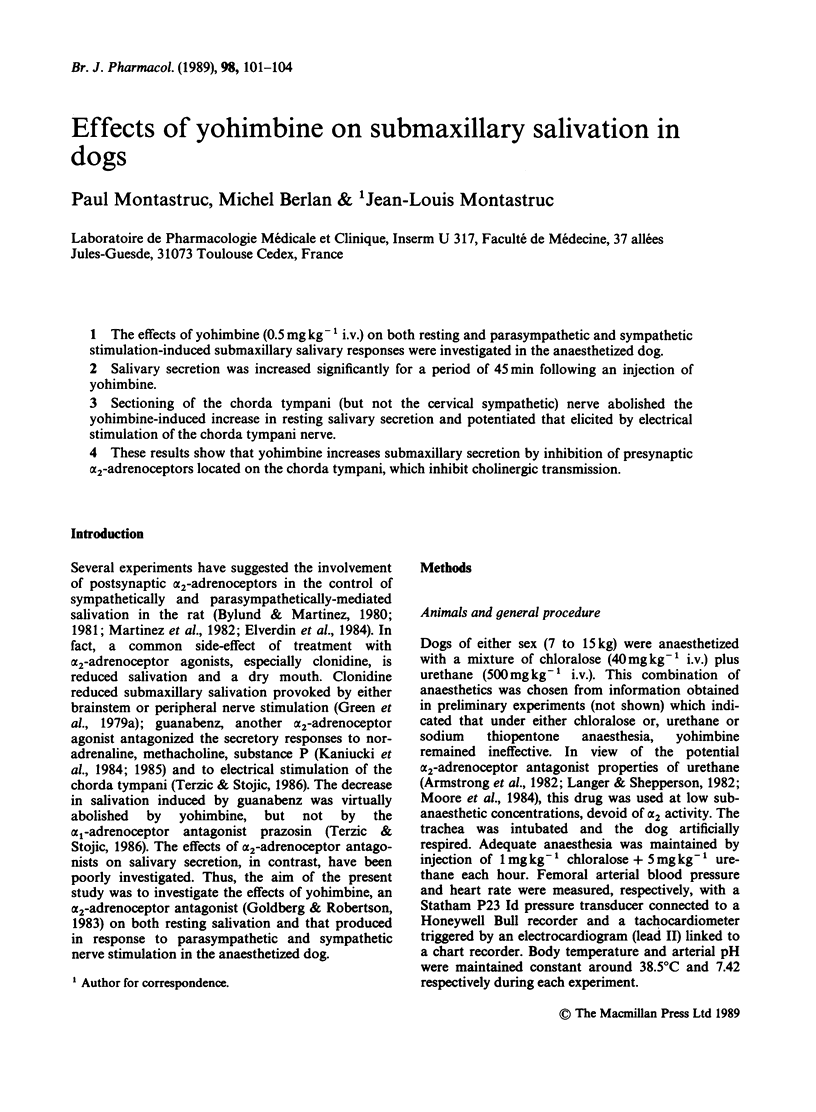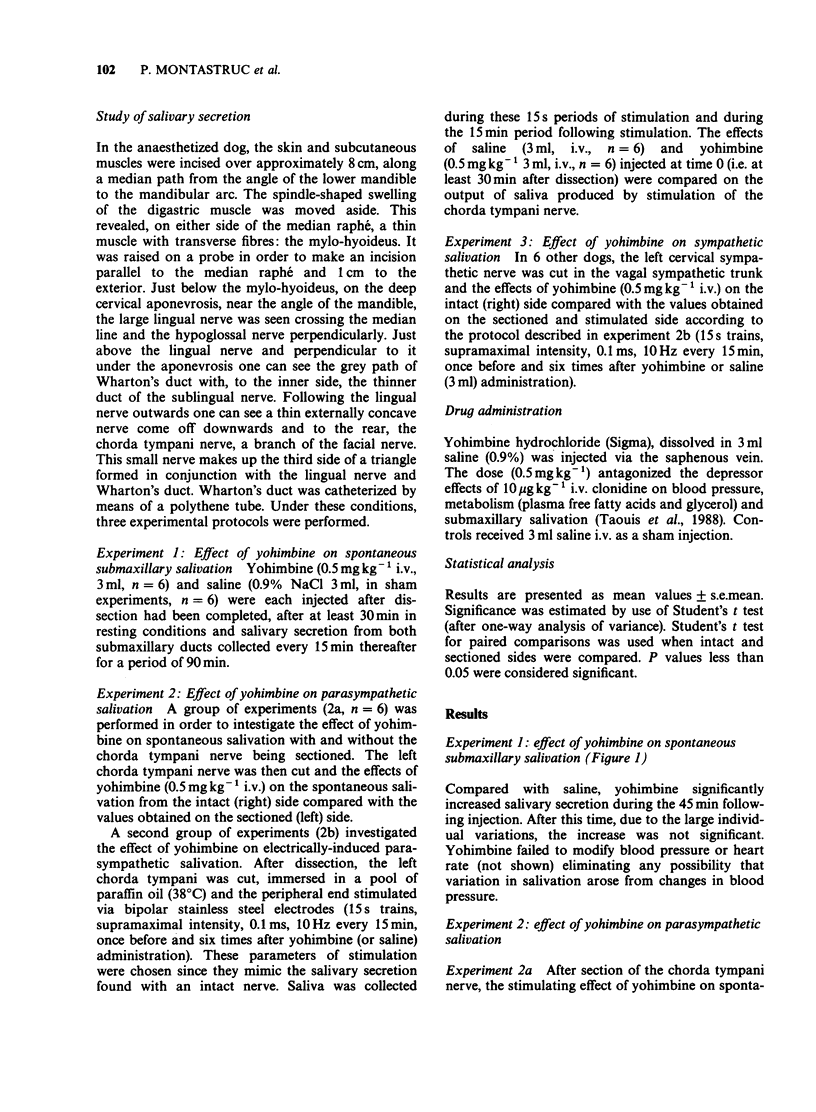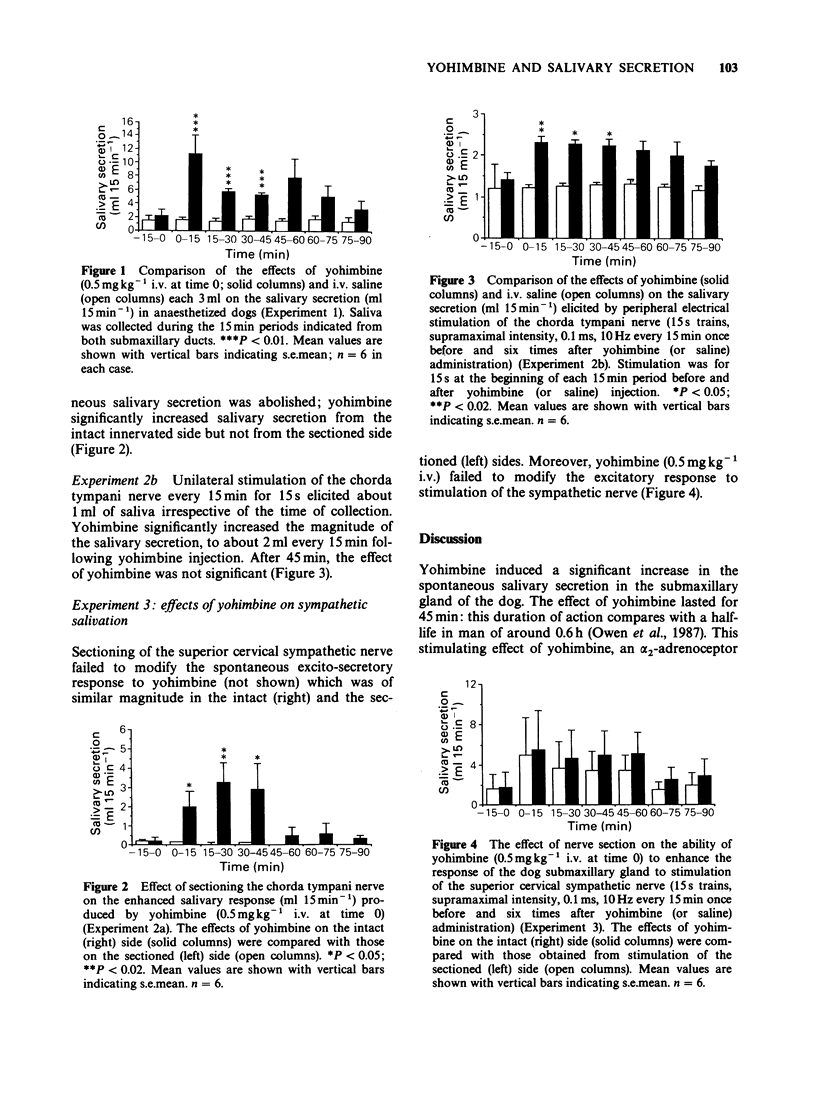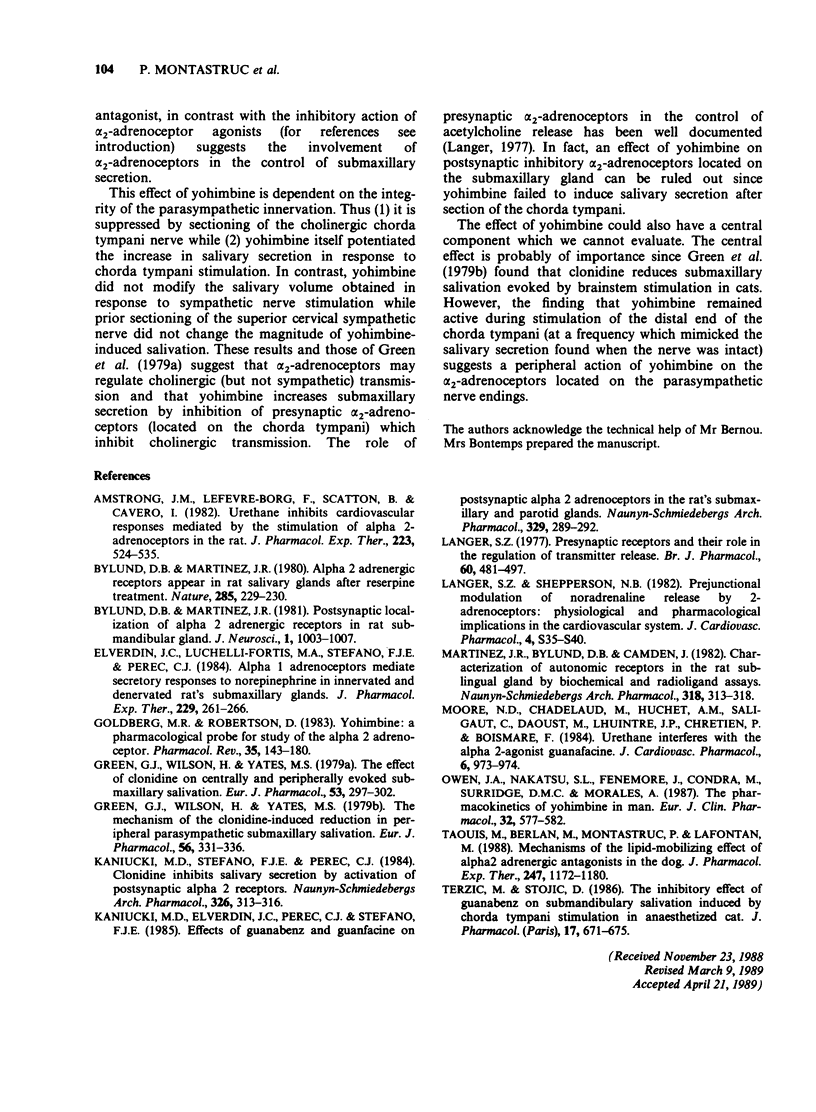Abstract
1. The effects of yohimbine (0.5 mg kg-1 i.v.) on both resting and parasympathetic and sympathetic stimulation-induced submaxillary salivary responses were investigated in the anaesthetized dog. 2. Salivary secretion was increased significantly for a period of 45 min following an injection of yohimbine. 3. Sectioning of the chorda tympani (but not the cervical sympathetic) nerve abolished the yohimbine-induced increase in resting salivary secretion and potentiated that elicited by electrical stimulation of the chorda tympani nerve. 4. These results show that yohimbine increases submaxillary secretion by inhibition of presynaptic alpha 2-adrenoceptors located on the chorda tympani, which inhibit cholinergic transmission.
Full text
PDF



Selected References
These references are in PubMed. This may not be the complete list of references from this article.
- Armstrong J. M., Lefèvre-Borg F., Scatton B., Cavero I. Urethane inhibits cardiovascular responses mediated by the stimulation of alpha-2 adrenoceptors in the rat. J Pharmacol Exp Ther. 1982 Nov;223(2):524–535. [PubMed] [Google Scholar]
- Bylund D. B., Martinez J. R. Postsynaptic localization of alpha 2-adrenergic receptors in rat submandibular gland. J Neurosci. 1981 Sep;1(9):1003–1007. doi: 10.1523/JNEUROSCI.01-09-01003.1981. [DOI] [PMC free article] [PubMed] [Google Scholar]
- Bylund D. B., Martinez J. R. alpha 2-Adrenergic receptors appear in rat salivary glands after reserpine treatment. Nature. 1980 May 22;285(5762):229–230. doi: 10.1038/285229a0. [DOI] [PubMed] [Google Scholar]
- Elverdin J. C., Luchelli-Fortis M. A., Stefano F. J., Perec C. J. Alpha-1 adrenoceptors mediate secretory responses to norepinephrine in innervated and denervated rat submaxillary glands. J Pharmacol Exp Ther. 1984 Apr;229(1):261–266. [PubMed] [Google Scholar]
- Goldberg M. R., Robertson D. Yohimbine: a pharmacological probe for study of the alpha 2-adrenoreceptor. Pharmacol Rev. 1983 Sep;35(3):143–180. [PubMed] [Google Scholar]
- Green G. J., Wilson H., Yates M. S. The effect of clonidine on centrally and peripherally evoked submaxillary salivation. Eur J Pharmacol. 1979 Jan 15;53(3):297–300. doi: 10.1016/0014-2999(79)90136-5. [DOI] [PubMed] [Google Scholar]
- Green G. J., Wilson H., Yates M. S. The mechanism of the clonidine-induced reduction in peripheral parasympathetic submaxillary salivation. Eur J Pharmacol. 1979 Jul 1;56(4):331–336. doi: 10.1016/0014-2999(79)90263-2. [DOI] [PubMed] [Google Scholar]
- Kaniucki M. D., Elverdin J. C., Stefano F. J., Perec C. J. Effects of guanabenz and guanfacine on postsynaptic alpha 2-adrenoceptors in the rat submaxillary and parotid glands. Naunyn Schmiedebergs Arch Pharmacol. 1985 May;329(3):289–292. doi: 10.1007/BF00501882. [DOI] [PubMed] [Google Scholar]
- Kaniucki M. D., Stefano F. J., Perec C. J. Clonidine inhibits salivary secretion by activation of postsynaptic alpha 2-receptors. Naunyn Schmiedebergs Arch Pharmacol. 1984 Jul;326(4):313–316. doi: 10.1007/BF00501435. [DOI] [PubMed] [Google Scholar]
- Langer S. Z., Shepperson N. B. Prejunctional modulation of noradrenaline release by alpha 2-adrenoceptors: physiological and pharmacological implications in the cardiovascular system. J Cardiovasc Pharmacol. 1982;4 (Suppl 1):S35–S40. [PubMed] [Google Scholar]
- Langer S. Z. Sixth gaddum memorial lecture, National Institute for Medical Research, Mill Hill, January 1977. Presynaptic receptors and their role in the regulation of transmitter release. Br J Pharmacol. 1977 Aug;60(4):481–497. doi: 10.1111/j.1476-5381.1977.tb07526.x. [DOI] [PMC free article] [PubMed] [Google Scholar]
- Martinez J. R., Bylund D. B., Camden J. Characterization of autonomic receptors in the rat sublingual gland by biochemical and radioligand assays. Naunyn Schmiedebergs Arch Pharmacol. 1982 Mar;318(4):313–318. doi: 10.1007/BF00501171. [DOI] [PubMed] [Google Scholar]
- Moore N. D., Chadelaud M., Huchet A. M., Saligaut C., Daoust M., Lhuintre J. P., Chrétien P., Boismare F. Urethane interferes with the alpha 2-agonist guanfacine. J Cardiovasc Pharmacol. 1984 Sep-Oct;6(5):973–974. doi: 10.1097/00005344-198409000-00036. [DOI] [PubMed] [Google Scholar]
- Owen J. A., Nakatsu S. L., Fenemore J., Condra M., Surridge D. H., Morales A. The pharmacokinetics of yohimbine in man. Eur J Clin Pharmacol. 1987;32(6):577–582. doi: 10.1007/BF02455991. [DOI] [PubMed] [Google Scholar]
- Taouis M., Berlan M., Montastruc P., Lafontan M. Mechanism of the lipid-mobilizing effect of alpha-2 adrenergic antagonists in the dog. J Pharmacol Exp Ther. 1988 Dec;247(3):1172–1180. [PubMed] [Google Scholar]
- Terzić M., Stojić D. The inhibitory effect of guanabenz on submandibulary salivation induced by chorda tympani stimulation in anaesthetized cat. J Pharmacol. 1986 Oct-Dec;17(4):671–675. [PubMed] [Google Scholar]


